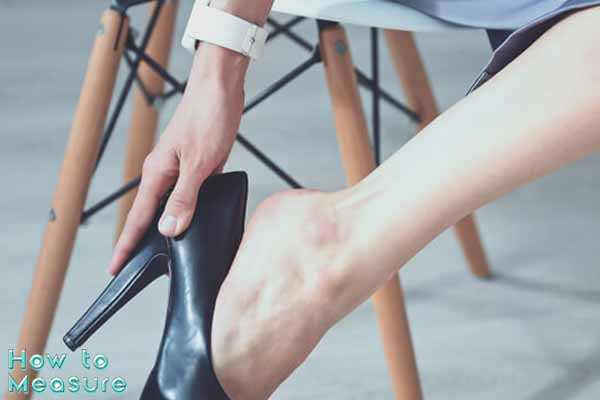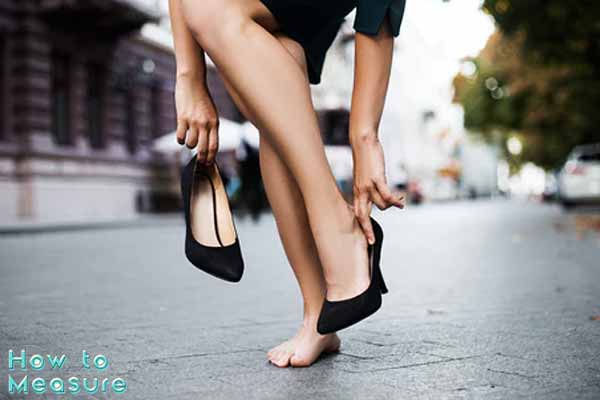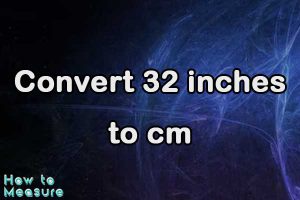Are you tired of buying shoes that don’t fit you well? Understanding how to measure your shoe size accurately is crucial to finding the perfect pair of shoes. This comprehensive guide will walk you through measuring your shoe size in inches. Whether purchasing shoes online or in a physical store, these step-by-step instructions on How to Measure will ensure a comfortable and precise fit. So let’s get started!
Finding the perfect-fitting shoes can enhance your comfort and overall well-being. By measuring your shoe size accurately, you can avoid the inconvenience of ill-fitting shoes and enjoy a comfortable stride. This article will guide you through measuring your shoe size in inches, enabling you to make informed decisions when purchasing footwear.
Why Accurate Shoe Measurement is Important
Accurate shoe measurement is crucial for several reasons, from personal comfort and foot health to optimizing athletic performance and ensuring proper posture. Whether purchasing casual shoes, dress shoes, or athletic footwear, obtaining precise measurements is essential to finding the right fit and reaping the associated benefits. Here are some reasons why accurate shoe measurement is important:
- Comfort and Foot Health: Ill-fitting shoes can lead to foot problems, such as blisters, calluses, corns, bunions, and even more serious conditions like plantar fasciitis. Accurate shoe measurement ensures that your shoes provide adequate support, proper arch alignment, and sufficient room for your toes to move comfortably. Shoes that are too tight or too loose can create pressure points, restrict blood circulation, and cause discomfort or pain.
- Prevention of Foot Disorders: Wearing shoes that don’t fit properly can contribute to developing or worsening foot disorders. For instance, tight shoes may exacerbate ingrown toenails, Morton’s neuroma, or hammertoes. By obtaining accurate measurements and selecting shoes that match your foot shape and size, you can reduce the risk of these issues and maintain better foot health in the long run.
- Enhanced Athletic Performance: Athletes, whether professionals or amateurs, rely on accurate shoe measurements to optimize their performance. In sports such as running, basketball, soccer, or tennis, the right fit is critical to support proper foot biomechanics, enhance stability, and improve agility. Ill-fitting shoes can impede movement, cause discomfort, and potentially increase the risk of injuries. Athletes can achieve better balance, flexibility, and overall performance by ensuring accurate measurements.
- Posture and Alignment: Wearing shoes that don’t fit correctly can impact your body’s alignment and posture. Your feet serve as the foundation for your entire skeletal structure; if they are not adequately supported, it can lead to issues throughout your body. For example, an improper shoe fit can contribute to knee, hip, or back pain and postural imbalances. Accurate shoe measurement helps maintain proper alignment, reducing the strain on various joints and minimizing the risk of musculoskeletal problems.
- Extended Shoe Lifespan: When shoes are too small or too large, they undergo additional stress during walking or running. The constant pressure on certain areas, such as the toe box or heel, can cause premature wear and tear, reducing the shoe’s lifespan. Accurate shoe measurement ensures that the shoe distributes your weight evenly and reduces excessive stress on particular areas, increasing the durability and longevity of your footwear.
In conclusion, accurate shoe measurement is vital for personal comfort, foot health, and overall well-being. It allows for selecting properly fitting shoes that provide adequate support, reduce the risk of foot disorders, enhance athletic performance, maintain proper posture, and increase the longevity of your shoes. Whether purchasing shoes for everyday wear or engaging in athletic activities, measuring your feet accurately can make a significant difference in your overall foot health and quality of life.
Tools Required to Measure Shoe Size in Inches
To measure your shoe size in inches, you will need the following tools:
- A piece of paper larger than your foot
- A ruler or a measuring tape
- A pen or pencil
Step-by-Step Guide to Measure Shoe Size in Inches
Step 1: Gather the necessary materials. You will need a ruler or a tape measure and a piece of paper large enough to fit your foot. Using a ruler or tape measure in inches is recommended for consistent measurements.
Step 2: Find a flat surface to stand on, such as a hardwood or tiled floor. It’s important to choose a surface that is level and free from any obstructions like rugs or carpets, as they can affect the accuracy of the measurement.
Step 3: Place the piece of paper on the floor, ensuring that it lies flat and is aligned with the surface. Smooth out any wrinkles or creases in the paper to obtain accurate measurements.
Step 4: Sit on a chair and extend one foot before you, resting it flat on the paper. Ensure your foot is relaxed and not tense, as tensing your foot can lead to inaccurate measurements.
Step 5: With the ruler or tape measure, align it vertically along the side of your foot. Start at the back of your heel and ensure the ruler or tape measure touches the heel and the longest toe (usually the big toe).
Step 6: Hold the ruler or tape measure in place and take note of the measurement in inches. It’s best to read the measurement at eye level to avoid parallax errors. Using a ruler, align it with the nearest eighth of an inch for precise measurements.
Step 7: Repeat steps 4 to 6 for the other foot. It is common for one foot to be slightly larger than the other, so measuring both feet is important. This will help you determine the appropriate shoe size for each foot.
Step 8: Once you have the measurements for both feet, compare the results. Take note of the larger of the two measurements. This larger measurement will be your foot size in inches.
Step 9: To find your shoe size, refer to a shoe size chart that correlates foot length in inches with the corresponding shoe size. Most shoe size charts provide a range of foot lengths and corresponding shoe sizes. Remember that different brands may have slight variations in sizing, so it’s best to refer to the specific brand’s size chart if available.
It’s important to note that while this guide provides a basic method to measure your shoe size in inches, it may only capture some of the intricacies of your foot shape and size. For more accurate results and a better understanding of your foot measurements, you should visit a shoe store and have a professional measure your feet using a Brannock device or seek assistance from a podiatrist. These professionals can provide valuable insights and recommendations based on your specific foot characteristics and needs.
Tips for Accurate Measurement Shoe Size in Inches
Accurately measuring your shoe size in inches is essential for finding the right fit and ensuring optimal comfort. To help you obtain precise measurements, here are some tips to follow:
- Use a flat, level surface: Find a hard surface, such as a hardwood or tiled floor, to stand on while measuring. Avoid uneven or soft surfaces like carpets, as they can affect the accuracy of your measurements.
- Stand up straight: When measuring your feet, stand up straight with your weight evenly distributed. Proper posture ensures that your feet are in their natural position, providing more accurate measurements.
- Measure at the end of the day: Feet tend to swell slightly throughout the day, so it’s best to measure your feet in the afternoon or evening. This ensures that you get measurements when your feet are at their largest size, helping you find shoes that will accommodate any swelling.
- Wear suitable socks: If you plan to wear specific socks with your shoes, it’s recommended to wear them while measuring. Different sock thicknesses can affect the fit, so using the same type of socks during measurement as you intend to wear with the shoes will give you a more accurate representation of the fit.
- Use a ruler or tape measure: Ensure you have a reliable ruler or tape measure in inches. Precision is key when measuring, so use a tool that provides precise, accurate measurements.
- Take multiple measurements: Measuring your feet more than once is a good idea to ensure consistency and accuracy. If you find any discrepancies between measurements, take an average of the readings to determine the most reliable measurement.
- Measure both feet: It’s common for one foot to be slightly larger than the other. To accommodate this, measure both feet and use the larger measurement to reference your shoe size.
- Round up: When measuring, round up to the nearest eighth of an inch for better accuracy. This small adjustment helps account for slight variations and ensures you choose the correct shoe size.
- Refer to a reliable size chart: Consult a reputable shoe size chart that correlates foot length in inches with the corresponding shoe size. Different brands may have their size charts, so it’s advisable to refer to the specific brand’s chart if available.
- Seek professional assistance if needed: If you need more clarification about your measurements or have unique foot characteristics, consider visiting a shoe store and having a professional measure your feet using a Brannock device. They can offer expert advice and guidance to help you find the perfect fit.
- By following these tips, you can increase the accuracy of your shoe size measurements and improve your chances of finding shoes that fit comfortably and support your foot health.
Common Mistakes to Avoid
- Neglecting width measurement: Many people focus only on the length of their foot when measuring shoe size. However, width is equally important for a comfortable fit.
- Using worn-out shoes as a reference: Shoes can stretch and lose their original shape over time. It’s best to measure your foot directly instead of relying on the size of your worn-out shoes.
How to Convert Your Shoe Size in inches
If you are accustomed to a different shoe sizing system, converting your shoe size to inches is simple. Refer to a reliable shoe size conversion chart that provides accurate conversions between different sizing systems.
Choosing the Right Shoe Size
Now that you have determined your shoe size in inches, it’s important to consider other factors when choosing the right shoe. Factors such as shoe width, style, and personal preferences should also be considered to ensure a perfect fit.
FAQs (Frequently Asked Questions)
Q1. How often should I measure my shoe size? Measuring your shoe size every six months or whenever you notice discomfort or a change in foot size is recommended.
Q2. Can I measure my shoe size by tracing my foot on paper? Tracing your foot on paper can provide a rough estimate, but using a ruler or measuring tape is more accurate.
Q3. Is it necessary to measure both the length and width of my foot? Yes, measuring your foot’s length and width is important for finding a well-fitting shoe.
Q4. Should I consider the type of socks I will wear with the shoes? If you frequently wear thick socks or have special sock requirements, consider measuring your foot with the socks on to ensure the right fit.
Q5. Can I use this method for measuring children’s shoe sizes? Yes, this method can be used for measuring children’s shoe sizes. Ensure that the child’s foot is fully extended when measuring.
Conclusion
Accurately measuring your shoe size in inches is essential for finding shoes that fit well and provide optimal comfort. Following the step-by-step guide in this article, you can confidently measure your shoe size and make informed decisions when purchasing footwear. Remember to measure your foot’s length and width, use reliable conversion charts, and consider other factors for the perfect fit.













